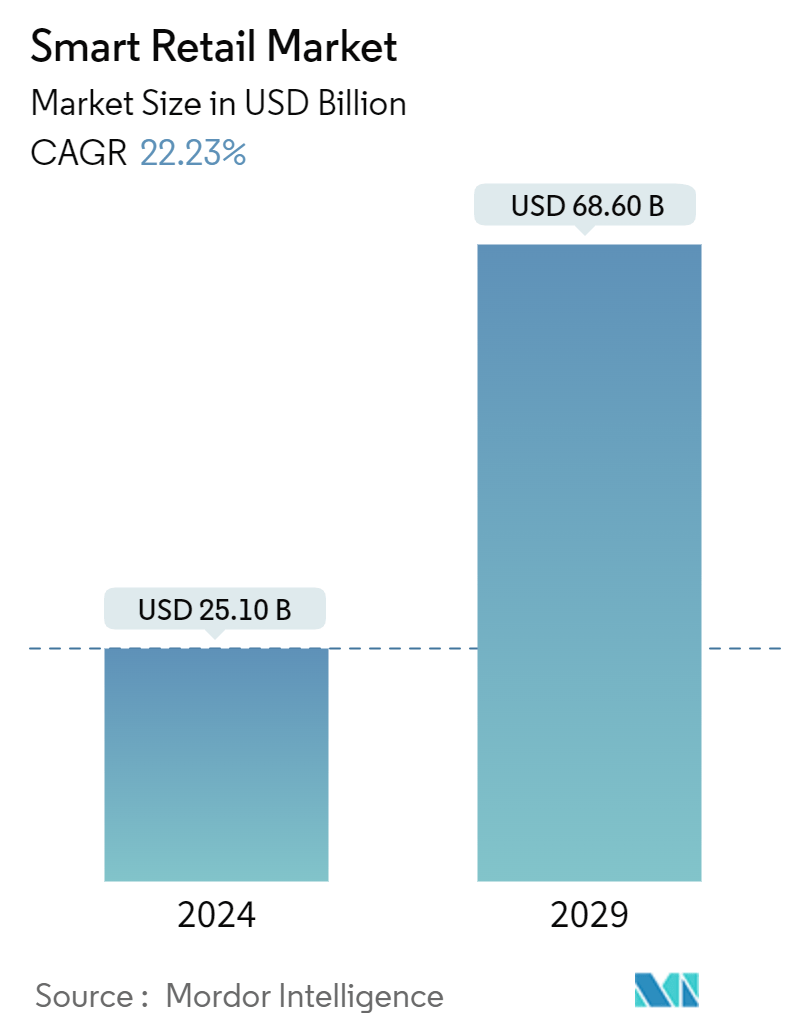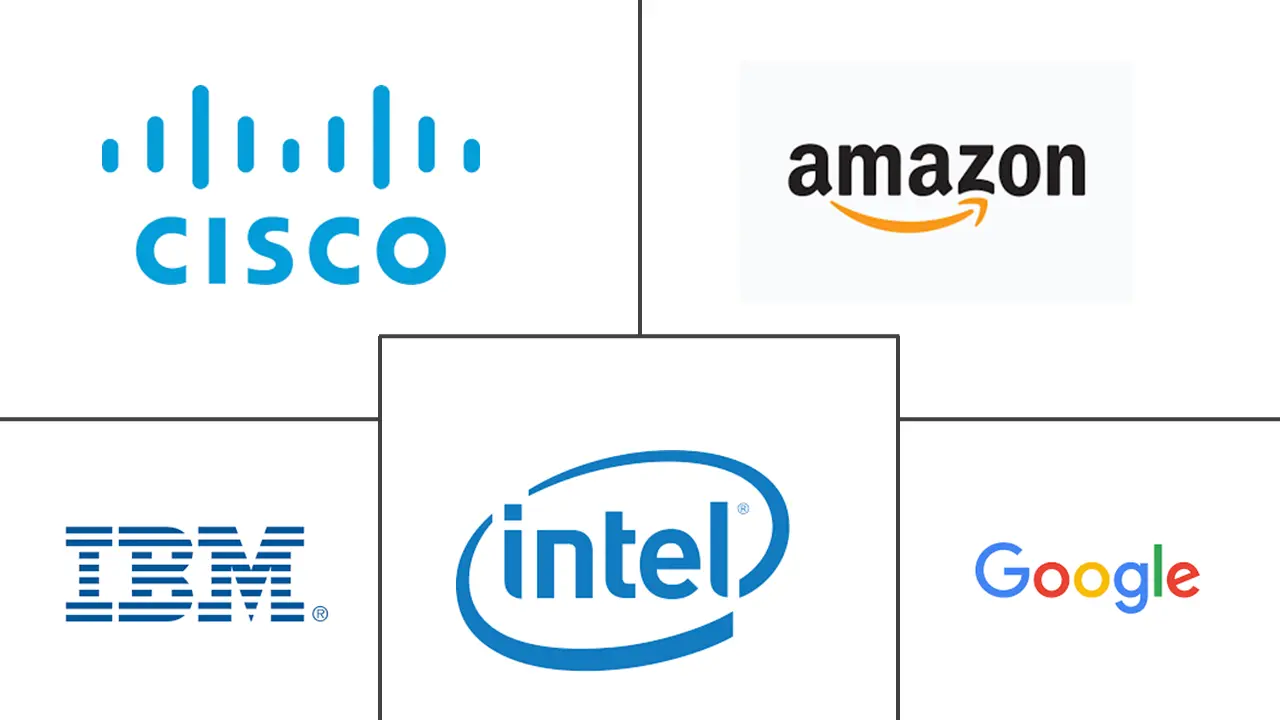Market Size of Smart Retail Industry

| Study Period | 2019 - 2029 |
| Market Size (2024) | USD 25.10 Billion |
| Market Size (2029) | USD 68.60 Billion |
| CAGR (2024 - 2029) | 22.23 % |
| Fastest Growing Market | North America |
| Largest Market | Asia Pacific |
Major Players
*Disclaimer: Major Players sorted in no particular order |
Smart Retail Market Analysis
The Smart Retail Market size is estimated at USD 25.10 billion in 2024, and is expected to reach USD 68.60 billion by 2029, growing at a CAGR of 22.23% during the forecast period (2024-2029).
- Smart retail encompasses the application of technology and data to improve the shopping experience for consumers while streamlining the operations of retailers. These innovative solutions empower businesses to elevate customer satisfaction, refine operational processes, and acquire significant insights into consumer behavior. The advancement of artificial intelligence profoundly influenced smart retail solutions. AI-driven technologies, including machine learning, computer vision, and natural language processing, enable retailers to process extensive datasets and derive insights regarding customer behavior and preferences. Such information can be utilized to tailor shopping experiences, enhance product recommendations, and streamline inventory management.
- In January 2024, Walmart revealed its intentions to explore artificial intelligence and drone technology further to enhance its customers' shopping experience. Among the advancements in artificial intelligence is the introduction of AI-driven generative search for iOS users, which recommends products tailored to consumers' inquiries, ranging from football gatherings to wedding celebrations.
- In the realm of smart retail, the Internet of Things (IoT) plays an important role by linking devices to the internet. This connection yields invaluable insights into consumer behavior, store operations, and inventory management. Retailers harness IoT devices, including sensors and beacons, to gather real-time data on inventory levels, consumer movement, and store assets. Such data help retailers to make informed decisions and streamline their processes.
- The retail sector is deeply connected to individuals' everyday experiences. Business proprietors must remain informed about changing consumer preferences while also addressing various operational hurdles. These hurdles encompass inventory management, customer foot traffic, marketing approaches, and expense control. As a result, the retail industry's digital transformation and intelligent enhancement are both experiencing significant growth.
- Many retailers lack the infrastructure and network components to handle the substantial volumes of IoT data. For merchants to successfully digitize their retail environments, it is essential to implement a strong network, cloud-based solutions, and end-user devices such as barcode scanners, tablets, and mobile point-of-sale systems. Acquiring these elements would necessitate a substantial financial investment, making it difficult for small and medium retail stores to adopt these technologies quickly.
- Macroeconomic factors, such as fluctuations in exchange rates and shifts in international trade dynamics, could sway the global smart retail market. Changes in currency values might influence the costs of imported smart retail hardware and raw materials, subsequently impacting equipment manufacturers' pricing strategies and profitability. Hence, such factors also influence the studied market's growth.

